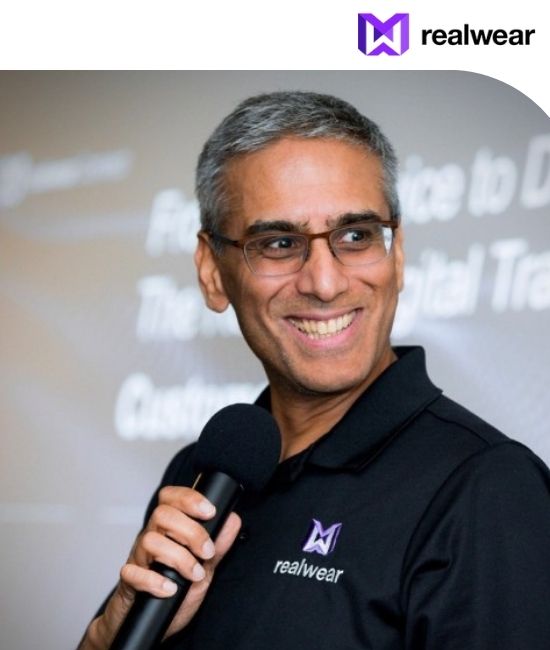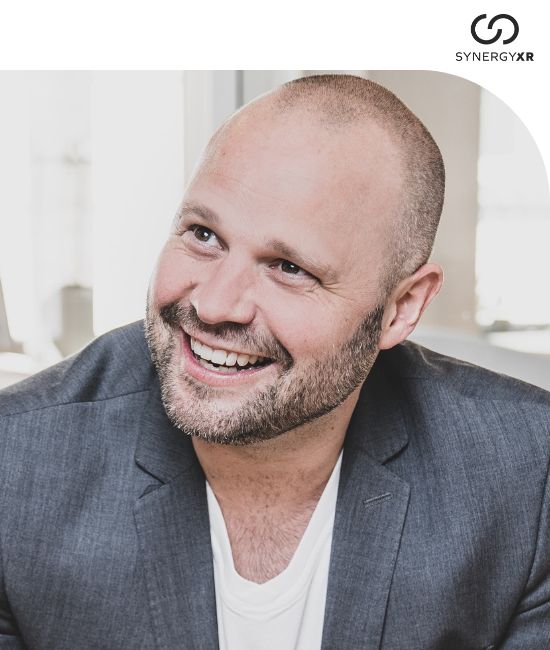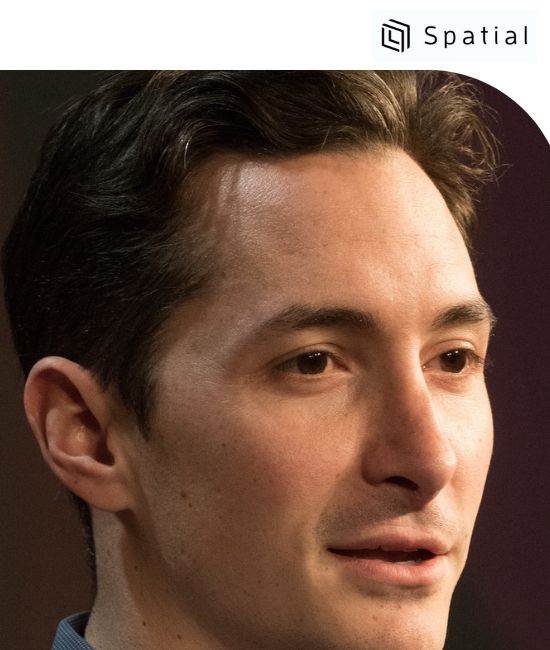10:00 AM - 10:25 AM
Description
Mixed Reality (XR) offers an opportunity to catalytically change how humans operate in the world, enabling understanding and action never before possible. At the center of this potential are the challenges and opportunities of the human-machine interface and the ability to use these systems in real-world scenarios. Specifically, the challenge entails how (and when) to integrate XR appropriately and generatively into the Perception-Acton loop during real world tasks. The DoD industry base, like many other industries, is investing heavily into XR across many dimensions. The implementation of XR technologies on the individual Soldier entail a complete and robust understanding of not only the optical-mechanical systems themselves but, more importantly, the understanding of the challenges of implementing such a device on the human system. Dr. Palmer will speak to these challenges and opportunities, as well as their portability to other industries looking to enable increased performance, efficiencies, or joy to the users of these devices. Topics will include Data to Decision (D2D) in Context, Architectural Requirements and Trades when implementing on Human Systems, the challenge of Cognitive/Attentional/Physical Load, and Management of Local (XR) – Global (Real World) relations in different contexts.
Speakers

10:30 AM - 10:55 AM
Description
No matter the industry, the impacts of downtime add up quickly. Renault Trucks, a top manufacturer of light and heavy goods vehicles and transport solutions, deployed its “Optiview” service, to help counteract this. The service combines Librestream’s #1-rated augmented reality (AR) and remote collaboration solution, and RealWear’s HMT-1 headsets to enable hands-free remote support service for their dealerships.
Join Librestream and RealWear to learn about Renault Trucks’ path to digital transformation, implementation, results, challenges, and lessons learned. You’ll walk away with actionable insight into how you can achieve the benefits offered by hands-free, AR-powered remote collaboration solutions.
Speakers


11:20 AM - 11:45 AM
11:50 AM - 12:15 PM
Description
Artificial Intelligence and XR streaming technology pave the way for future XR applications in training and virtual surgery. With a combination of augmented reality software and hardware, the company specializing in virtual simulation systems, MXR Tactics, aims to increase the efficiency of trainings in healthcare, security, forensics and industry by 40-60 percent. Enhatch, the Intelligent Surgery Ecosystem is harnessing AI to create a faster, safer and more personalized surgical experience for the millions of patients. Both XR use cases are empowered by Holo-Light’s XR streaming technology ISAR.
Speakers




02:15 PM - 02:40 PM
Description
Red 6, a technology at the forefront of synthetic training, was founded on the vision to revolutionize training for our warfighters by creating CARBON, the world’s first outdoor synthetic training environment. Using a combination of Augmented Reality and Artificial Intelligence, CARBON allows real fighter pilots, in real airplanes, to visually fly and train against any synthetic threat. Ultimately it will scale to connect all warfighters, across all domains into a joint augmented battlespace, thereby ushering in a new paradigm in training for our military. This vision is fast becoming a reality and Red 6 is in the fight for the future of our national security.
Speakers

02:45 PM - 03:10 PM
Description
Whereas consumer virtual reality (VR) systems can support scenarios that are quite visually and aurally realistic, most of todayâs VR hardware is lacking when it comes to physical touch. This can be especially problematic for cases where the goal is to train users for the use of real-world physical equipment. Although not widely implemented, enhancing existing VR systems with physical props and other physical cues can enable users to feel what they see, resulting in better training transfer to the real world. This talk will explore where such physicality is important and present some example props and use cases. Attendees will leave the talk with ideas of why and how they might incorporate physicality into their XR simulations.
Speakers

03:15 PM - 03:40 PM
Description
Grundfos is the world’s largest pump manufacturer and recognized for developing innovative water solutions that keeps millions of people connected every day. With more than 19,000 employees spread across the globe, they're always looking for new and better ways to communicate, collaborate and connect. That’s why, for more than a decade, they’ve been partnering with SynergyXR to become a frontrunner in using a wide range of XR technologies.
Since 2010, we’ve been helping Grundfos design and develop XR applications that’ve been driving value across the organization. Starting with award-winning VR and MR training solutions that helped reduced training times from weeks to days, our partnership has now blossomed to Grundfos being a frontrunner in using our new platform, SynergyXR.
As a DIY, XR platform that creates synergy across all XR applications, Grundfos has harnessed the power of SynergyXR and applied it to several use cases spread throughout the value chain. From evaluating candidates for their prestigious graduate program to hosting immersive sales meetings in virtual reality, Grundfos has demonstrated how XR is helping companies stay successful – even during a global pandemic.
During this interactive joint session, we’ll delve into how Grundfos uses SynergyXR to boost their value chain. We’ll explore specific use cases and spotlight how their global teams, from C-suite to front-line workers have responded to these innovations. We’ll also give the audience a live demo of SynergyXR so they can experience first-hand why it’s an XR game change
Speakers


04:05 PM - 04:30 PM
Description
We built an escape room in VR to help us evaluate a group's teaming skills. Learn about the "great team" characteristics identified by the MIT Human Dynamics lab, and how we are looking for these to manifest in collaborative mission training in VR.
Speakers


04:35 PM - 05:00 PM
Description
While many things got put on hold with the onset of the Pandemic last year, it was also a wake-up call that in some cases accelerated the push for some technologies to deliver on their promise of better efficiency, greater productivity, and increased flexibility amidst social distancing needs. We saw an almost immediate turn toward immersive learning and training applications as a means to educate, train, and certify commercial and enterprise workers remotely through the use of Augmented and Virtual Reality technologies. Mattney Beck, Sr. Manager of Product Marketing for Commercial AR/VR Solutions at Lenovo, will walk through real world use cases happening inside and outside of Lenovo made possible through AR and VR technology and the scalability of the ThinkReality Platform.
Speakers

05:05 PM - 05:30 PM
Description
With the Metaverse we’re moving from an Internet we look at to a spatial Internet that surrounds us. Companies approaching this new reality face incredible challenges: how can we design experiences that are user centric in a three dimensional space? How can we adapt successful formula from the 2D world without losing the added benefits from immersive worlds?
How can team work and share their early vision with clients or leadership?
One of the reasons why most of today’s XR UIs feel and look like pure 2D is very similar to the early days of the Internet. Right now XR is at a stage where the web was three decades ago: unespiring, complicated to get in and overall “risky”. The tools used nowadays to ideate and design this new metaverse were not made for this purpose, slowing down the adoption of this new media: companies are struggling to pitch their strategy and vision, teams are not getting funded and blockbuster games are very rare .
We do believe that within 2-3 years, metaverse will evolve in shape and form from what we have right now and we need fast, accessible and collaborative tools to ideate, communicate and iterate.
Speakers

05:35 PM - 06:00 PM
Description
Abstract: Dana Williams and American High School opened the world's first virtual reality high school in August of 2021. For the first time, students attend class - live with a teacher and other students from around the world - on a virtual reality campus. While some people are working on VR for the classroom, American High School made VR THE classroom. With projections that 10 million VR headsets will be sold this year, these young VR enthusiasts will begin looking for a better remote learning environment and the proof of concept by Dana Williams, funded in part by Qualcomm and built by VictoryXR, paves the way for a monumental paradigm shift.
Speakers


